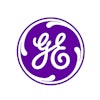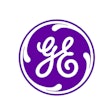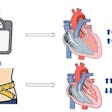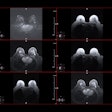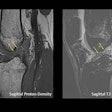Straight talk, page 2
No more data silos?
The trend has been to move away from having individualized data silos for each clinical system and toward a centralized data repository (CDR). There are a host of reasons behind this. Not only does ongoing support cost play a huge factor, but which CDR to pick usually requires a fairly extensive evaluation process. Things that need to be factored in include facilities archive requirements, as well as disaster recovery and even business continuity plans. This too requires IT involvement.
Vendor-neutral archives and the use of the cloud are garnishing more than the lion's share of interest, but the amount of information (or misinformation) about them is simply amazing. There isn't even a standardized definition of what constitutes a VNA. As my counterpart and frequent AuntMinnie.com contributor Herman Oosterwijk of OTech points out in a recent blog post, there are many issues related to implementing a VNA.
Not the least of these is how each vendor identifies the features its VNA has to offer and, in doing so, which "level" it attains. This ranges from level 1, a simple DICOM archive, to level 5, a patient-centric open-architecture archive that allows you to fully manage the data through the use of image lifecycle management software , as well as XDS (Cross-Enterprise Document Sharing) and XDS-I protocols (XDS for Imaging) and PIX (Patient Identifier Cross-Referencing) and PDQ (Patient Demographics Query) standards.
You also don't just put in a VNA without first performing a highly detailed assessment of the current and proposed data storage requirements. This includes everything from data formatting to data migration and can take several weeks or longer of resource-intense time to complete. The cloud has its own set of issues, with private, public, and hybrid clouds, each with its own advantages and benefits (and disadvantages).
Issues with VNAs and clouds also extend to hardware utilization, and when, where, and even if certain applications can and will run better in a virtualized environment. This is an area hospitals are looking at as well to save on costs, space, support, and other areas. Just like the other decisions, though, there are pros and cons of each that include cloud-specific issues related to data safety, using either a virtual private network, data encryption, or both.
The mantra of all hospitals these days is "do more with less," while improving the overall operation of the facility. While "more" and "less" seemingly do not go hand in hand, it is the new reality of healthcare. That said, the best way to do more with less is to improve workflow.
PACS optimization
Improving workflow is in the top 10 of virtually everyone's areas for improvement, but interestingly enough, it's rarely looked at from an objective standpoint. While every vendor provides a degree of training after the sale, for example, follow-up training is usually nonexistent or extremely limited.
In addition, important tasks such as optimizing hanging protocols, setting up keystroke shortcuts, and other things that can improve productivity often fall by the wayside or are easily forgotten, especially if they are not done consistently by the PACS administrator. The same can be said for reconciling databases and other related issues. PACS optimization often addresses these areas as well.
Some might ask, "If optimizing your PACS (or any other system) is the answer, then why not just ask users what they feel is wrong and fix it?" Simply put, it's not that easy. Optimizing system performance and improving workflow internally is like a couple trying to work out their relationship problems on their own.
They may be successful to a limited degree, but most likely they are best served by someone who has had experience with other relationships, the problems they have experienced, and the strategies for making it better with minimal impact on everyone. That is why many facilities are now looking at PACS optimization services to help them before making any additional investments.
PACS optimization typically involves reviewing both the technical and operational aspects of radiology and cardiology. This can include a detailed review of the system hardware, system software (including third-party software and local and wide area networks), clinical system interfaces, database utilization, clinical workflow and application usage, and global operations.
Reviews typically cover internal support mechanisms (biomedical and IT departments), downtime procedures, disaster recovery and/or business continuity, and other related tasks.
Cardiology optimization
Cardiology optimization is much more exhaustive and often involves reviewing operations in each of the different cardiology labs, including cardiac catheterization, electrophysiology, hemodynamics, echocardiography and vascular ultrasound, electrocardiograms, stress and Holter management, and nuclear medicine. It also addresses supply management, structured reporting, and other tasks. With both departments, interviews with end users and stakeholders are crucial to the success of the optimization. Open and honest answers are key.
A baseline PACS optimization can be done in as little as a day or two and for a few thousand dollars. This will provide a facility with a high-level assessment of overall operations and is often all that is needed. This also provides a good starting point for internal discussions. More detailed PACS optimizations can take many weeks, months, or even longer and address multiple technical and operational aspects, evaluating operations at detailed levels while laying out a long-term blueprint for growth. Because of the extensive nature of this operation, the cost is considerably more.
PACS continues to evolve as the healthcare market changes. Its value to the hospital cannot be overstated, and this value will continue to increase as new software is implemented and the system is expanded to incorporate new technologies that reduce cost and improve workflow.
Michael J. Cannavo is known industry-wide as the PACSman. After several decades as an independent PACS consultant, he spent two years working as a strategic accounts manager with a major PACS vendor. He has now made it back safely from the dark side and is sharing his observations in this Straight Talk From the PACSman series.
His healthcare consulting services for end users include PACS optimization services, system upgrade and proposal reviews, service contract reviews, and other areas. The PACSman is also working with imaging and IT vendors developing both global and trade show-specific marketing programs using market-focused messaging. He can be reached at [email protected] or by phone at 407-359-0191.
The comments and observations expressed herein are those of the author and do not necessarily reflect the opinions of AuntMinnie.com.
Previous page | 2


